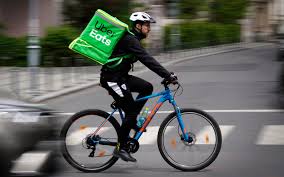The only mouthwatering aspect of the delivery business is its potential size. According to Bernstein, a brokerage, almost a third of the global restaurant industry is made up of home delivery, takeaway and drive-throughs, which could be worth $1trn by 2023. In 2018 delivery amounted to $161bn, leaving plenty of room for online firms to expand; the seven largest increased revenues by an average of 58%. Their businesses support the trend of 20- and 30- somethings to live alone or in shared accommodation, with less time and inclination to cook. In China, by far the biggest market for food delivery, one-third of people told a survey that they would be prepared to rent a flat without a kitchen because of the convenience of delivery. Delivery also fits neatly with the gig-economy zeitgeist, alongside ride-hailing firms such as Uber, Lyft and China’s Didi.

Yet as with ride-hailing, it is by no means clear if anyone can make money by delivering meals. In fact, the economics may be even worse. Co-ordination is more complicated. Meal-delivery firms must handle dishes that take different amounts of time to cook, while restaurants cope with orders from in-house customers. Most important, bookings must be split three ways: between delivery firms, restaurants and riders, rather than just between the ride-hailing firms and their drivers. The restaurants in particular are restive, not least because food is already a low-margin business. The most popular brands like McDonald’s and Starbucks wield the power to squeeze the delivery startups in exchange for access to millions of customers. Uber admits that Uber Eats may be forced to lower service fees for big restaurant chains.
译文由可可原创,仅供学习交流使用,未经许可请勿转载。











